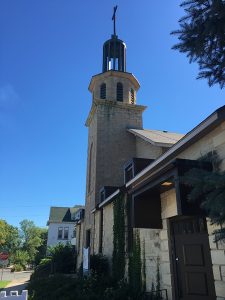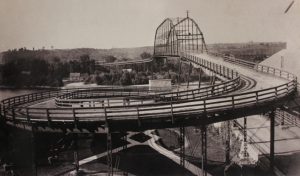At last week’s Preserve Minnesota conference, Tom Mayes presented on his research about the role historic preservation plays in everybody’s life. Mayes is the National Trust for Historic Preservation’s vice president and senior counsel. His research, supported by the Rome Prize, included interviews with not only preservationists, but also community members, business owners, politicians, and others who intersect with preservation, which—let’s face it—is everyone.

His results were documented in a series of essays in the National Trust’s Forum Journal:
- Continuity
- Memory
- Individual Identity
- Civic Identity
- Beauty
- History
- Architecture
- Learning
- Sacredness
- Creativity
- Ancestry
- Sustainability
- Community
- Economics
Coincidentally, I recently re-read these essays to help my mind transition from a traditional preservation career to one more focused on helping people better understand the ways in which preservation of our heritage can build better communities. [Full admission: the topics Mr. Mayes chose became a running theme in a portion of a course I’m developing as a “Historic Preservation 101” course, though I made that choice long before I saw Mr. Mayes speak.]
During the presentation last week, however, all I could do was look at his list and try to narrow it down further. In the end I kept going back to my basic belief that our understanding of, and respect for, history and heritage helps us form a solid foundation for a creating a more vibrant future. I will forever be the preservationist with futuristic tendencies, I suppose.
This concept isn’t new; it reiterates what was written in 1965 with the publication of With Heritage So Rich and in 1966 with the creation of the National Historic Preservation Act. It even goes back to the intent behind the 1935 Historic Sites Act and the 1906 Antiquities Act. So why is it that we still battle a perception that history or heritage doesn’t matter? That it’s OK to simply ignore its presence, wipe the slate clean, and start over? Consider:
- Dakota Access Pipeline (DAPL) destroys sacred grounds
- From historic to history: why the U of M is able to demolish the Electric Steel Elevator complex
- Villagers protest loss of affordable housing
Even as the National Historic Preservation Act reaches 50 years old, preservation is still seen as a movement restricted to blue-haired ladies in white tennis shoes saving the rich dead white guy’s high-style home. Beginning with the heroic efforts put forward by the Mount Vernon Ladies’ Association, preservation in the United States has always been seen as an elitist movement that impedes future progress and that all we need to do to minimally meet the Preservation Act’s intent is preserve the most beautiful and most significant properties.
Tom Mayes documented 14 reasons to preserve history. He ended his presentation last week by saying people perceive preservation as the dessert instead of the dinner; preservation is seen as something we can live without. He believes preservation needs to become part of the meal.

More than that, I believe preservation—or more appropriately: our history and our heritage—is the seasoning that permeates through the meal from start to finish. Imagine your favorite dish without the salt, pepper, spices, or herbs. If you remove the seasonings, the meal will fall flat, won’t it? The same thing will happen if you remove our heritage. It imbues not only the places we inhabit, but the heart, mind, and souls of each and every one of us. We mourn its loss.
We need to change the perception of historic preservation as being elitist: everyone benefits from being part of a movement to build better communities and everyone’s history is important.
We need to change the perception of historic preservation as an impediment to progress: preservation is possible in tandem with new development.
Finally, we need to promote the preservation of historic places–and our broader heritage–as a means to creating a vibrant, inclusive, and creative future imbued with everyone’s history.

